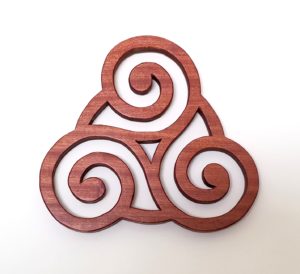
What are Celtic symbols and where do they come from? The Celts are a diverse group of peoples united by a common language and related cultures.
The Celts originated in central Europe, spreading out to France, the British Isles, and parts of Spain. From what historians and archeologists can tell, the Celts arrived in Great Britain and Ireland during the Iron Age. There is quite a lot of disagreement and uncertainty about the early history and geographic spread of the Celts. By the time the Roman Empire was expanding into Western Europe, the Celtic languages were mostly confined to Ireland, Wales, Scotland, Cornwall, Ilse of Man and Brittany. Today, the term Celtic generally refers to the languages and cultures of those areas. Current theories suggest that Celtic people may not be genetically or even culturally related so much as related by language.
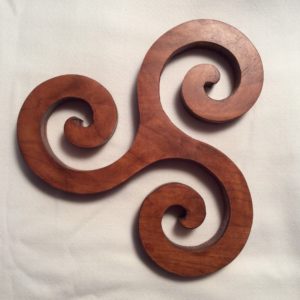
However opaque the origins, Celtic languages, music, art, dance and festivals have been enjoying a revival. Many of the designs found in Celtic art are derived from the Celtic symbols seen in museum artifacts.
The Newgrange Triple Spiral (or triskelle) is an ancient design carved into the stones at Newgrange, a burial mound dating back to 3200 B. C., older than the pyramids at Giza. Its true meaning is unknown, but many scholars believe that the three spirals represent birth, life and afterlife.
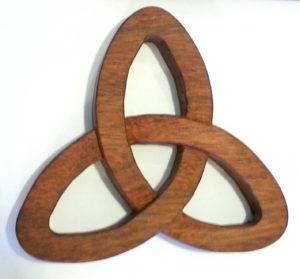
The Trinity Knot has pre-Christian and Christian meanings. The druids believed that this traditional triquetra represented three separate entities that are interconnected like earth, air and water. The Christians believe that the knot represents the Father, the Son, and the Holy Ghost.
St. Brigid was a contemporary of St. Patrick and is said to have
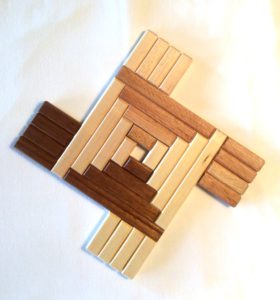
converted her father to Christianity while making a cross from rushes. Farmers adopted the custom of making these same crosses at the beginning of spring, placing the St. Brigids Crosses in prominent positions in their houses. The tradition of making St. Brigid’s Crosses on the 1st of February, St. Brigid’s Feast Day, continues to today. Charlie’s beautiful depiction of St. Brigid’s
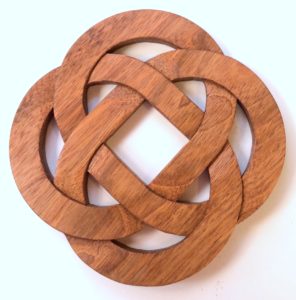
cross is made of wood, and is suitable for hanging or as a hot
plate.
The Eternity Knot, with no beginning and no end, symbolizes eternity reinforcing the endurance of love, tradition and heritage. And the Infinity Knot, also with no beginning and no end, symbolizes continuity into eternity and beyond.
In addition to the general Celtic symbols, there are also country-specific symbols. For example, the clover, claddagh and the harp are symbols of Ireland, the thistle, the lion and the crown are symbols of Scotland and the dragon, harp and daffodil are symbols of Wales.
